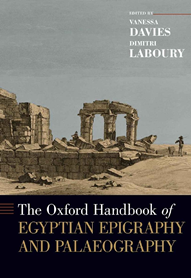| Main » Ad Board » ДРЕВЕН ЕГИПЕТ И АФРИКА » Литература |
| 22.02.2021, 18:46 | |
Древноегипетската йероглифна писменост има една уникална характеристика: тя е едновременно художествено изкуство на изображението и информационен носител. Затова надписите върху египетските храмове, обелиски, стели и други паметници са както разказ, така и част от декорацията. На древноегипетската епиграфика и палеография е посветено настоящото изчерпателно справочно издание. - на английски език, от MEGA, формат EPUB.Сваляне с ляв бутон (downloading by left button) и после през бутона Download. АЛТЕРНАТИВЕН ЛИНК / ALTERNATIVE LINK: - на английски език, от Google Drive, формат EPUB. Сваляне с ляв бутон (downloading by left button) от страницата на предоставящия сървър, после през бутона стрелка надолу/after by down arrow button.
| |
| Views: 1337 | Placed till: 22.03.2021 | Rating: 0.0/0 | |

